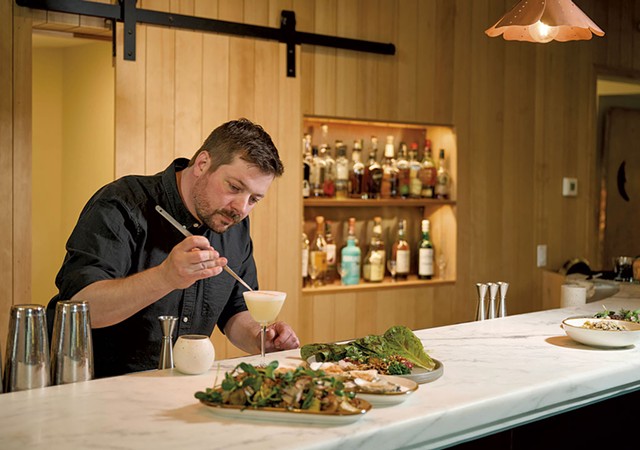Vermont
Legal battle continues over what landowner can do with blighted Burlington property
/cloudfront-us-east-1.images.arcpublishing.com/gray/HRF6PD4E7ZH27LS4ODCENM6HJM.jpg)
BURLINGTON, Vt. (WCAX) – An abandoned gas station in Burlington sits stagnant as a legal battle continues over what the owner can do with the property.
The former Simon’s gas station at the corner of Pearl Street and Hungerford Terrace is owned by Charlie Handy, who’s being forced to pay a fine for using the property as a parking lot. Handy says he pays his taxes and should be able to do what he wants with his land.
“It’s an eyesore and it’s not one of the things people want on a nice day like this to walk by and there’s an abandoned gas station,” said Griffin King, who lives nearby.
Neighbors of the gas station are upset about looking at the graffiti there each and every day.
After what the city says was ample notice, Burlington took the Handy family, who owns the property, to court. They were assessed a fee of $67,000 for misusing the property as a parking lot.
Now, after the Handys appealed the decision, their fine will likely be lower.
“I anticipate there will still be a fine, still relatively significant but ultimately for this property we are just hoping it could move forward to have an application come in that it can be permitted and have a productive use of the property,” said Kimberlee Sturtevant, the acting Burlington City Attorney.
Owner Charlie Handy believes they are already paying too much in taxes for the city of Burlington to be coming after them.
“I don’t understand why I’m even getting fined. I think we pay enough taxes in the city of Burlington that we should be able to use our property the way we see it should fit,” Handy said.
Neighbors hope the property can evolve.
“Definitely the deterioration of it is very upsetting, I’d say. I think that like we also have a huge housing crisis, so when I see this, I think this could become something,” said Rena Contract, a UVM student.
A sign hangs outside saying a beverage center and deli are coming.
“We might put housing there eventually, of course, that’s going to take a process, so we are just studying what’s best for that location. Maybe housing, maybe commercial down on the bottom, you know,” Handy said.
Handy says he hasn’t filed a permit yet to transform the property. In the meantime, he says they work daily to make sure it’s not being used as a parking lot to avoid any more fines.
The city says they might further appeal the decision but most of all would like to see the property become an asset in the city that falls within the zoning laws.
Related Stories:
Burlington property owner appeals fine for illegal parking lot
Burlington property owner ordered to pay $66K for illegal parking lot
Copyright 2023 WCAX. All rights reserved.

Vermont
Vermont is bringing back missing middle housing
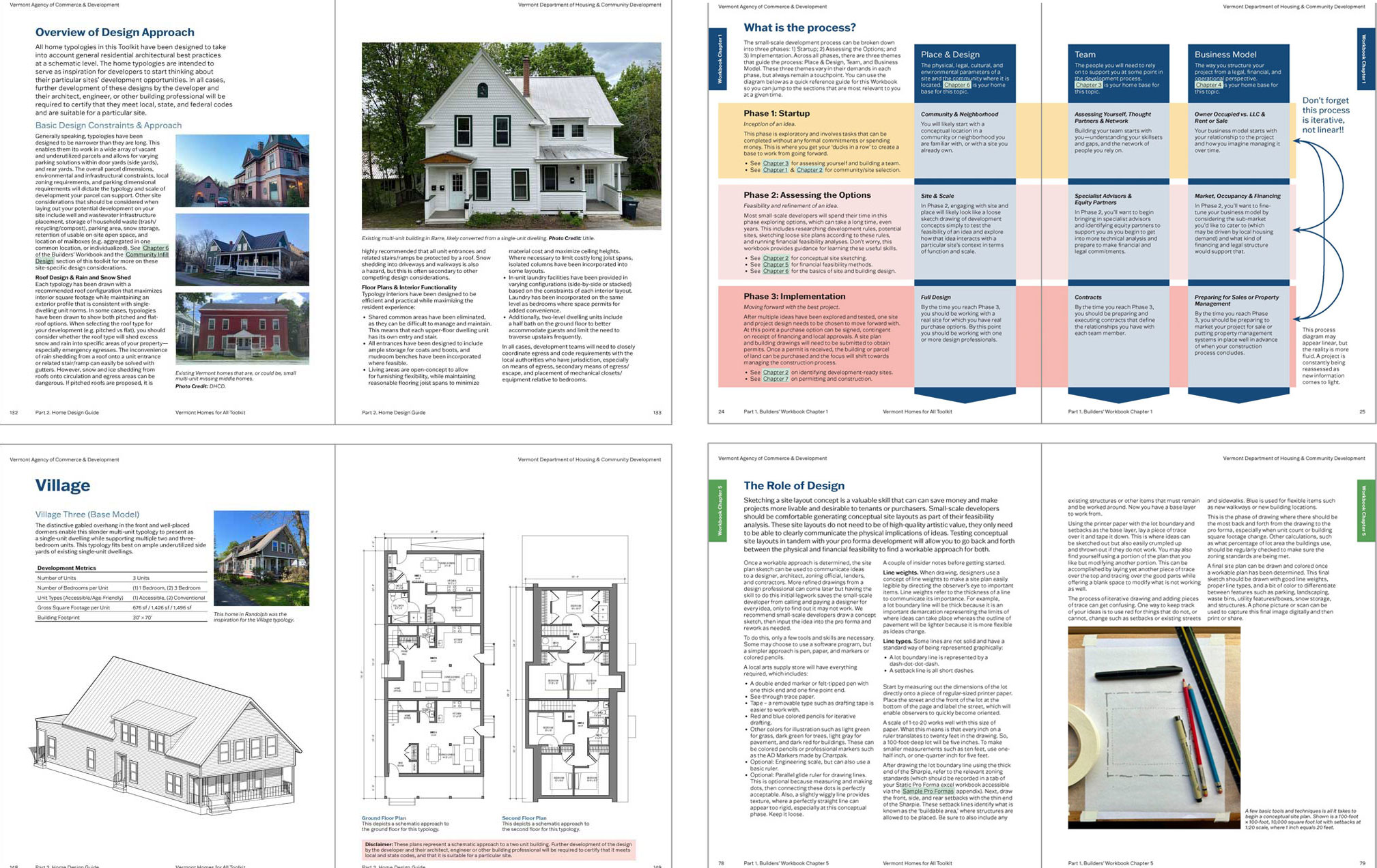
18 years ago, when Lilli West got into the real estate business, she saw a need. Back then, it was short sales and foreclosures—and she grew her business at an unlikely time when real estate agents were leaving the industry left and right. Today, as the owner of Maple Leaf Realty, the largest agency in Bennington, VT, West sees a different need: “We have run out of housing, and we desperately need new construction.”
To address this need, West thought Vermont would benefit from a checklist or roadmap for housing development, to streamline and clarify the complicated process. She was thrilled to learn that the Vermont Department of Housing and Community Development was creating this very tool to jumpstart and empower missing middle housing production.
The “Homes for All Toolkit,” launched in March 2024 and supported by AARP-VT funding, is a design-and-do guide for small-scale home builders, investors, and community leaders. It proposes missing middle homes, or MMH, as a way to deliver diverse and affordable housing choices in convenient, existing, walkable neighborhoods and places.
These home types, which include accessory dwelling units (ADUs), duplexes, small-scale multi-household buildings, and neighborhood-scale mixed-use/live-work buildings, are rooted in Vermont’s traditional development pattern and the New England vernacular style. However, over the 20th century, restrictive zoning and regulations made many of those options illegal or limited where they could be built.
The result for Vermont’s home production environment: large, expensive single-family homes, large and mid-size lots, and large-scale multi-family apartments. Vermonters looking for housing options in-between, like a duplex or four-plex, cooperative housing, senior housing units, age-friendly homes, or townhouse condominiums have very limited options.
The VT Homes for All Toolkit aims to change that.
This 220-page guide is full of tips, tools, and resources for would-be developers (and those who support their work) to build the well-located homes Vermonters need at different scales designed to cater to a range of income levels, family sizes, and lifestyles. It includes three components:
- Builders’ Workbook: A Missing Middle Home builders’ ‘how-to’ workbook that provides a comprehensive road map to real estate development for first-timers. This workbook provides guidance on a variety of considerations—including regulations and zoning, financing, infrastructure, and design, with advice on potential partners able to help beginner developers achieve success.
- Missing Middle Homes Design Guide: A design guide for Missing Middle Homes drawing from local architectural traditions that are familiar and loved by Vermonters—as well as suitable for New England’s variable weather.
- Vermont Neighborhood Infill Design Case Studies: A series of five case studies developed in cities and towns throughout Vermont (Bellows Falls, Arlington, Rutland, Vergennes and Middlesex) showing how MMH building designs can be integrated into existing neighborhoods and communities using illustrated visualizations.
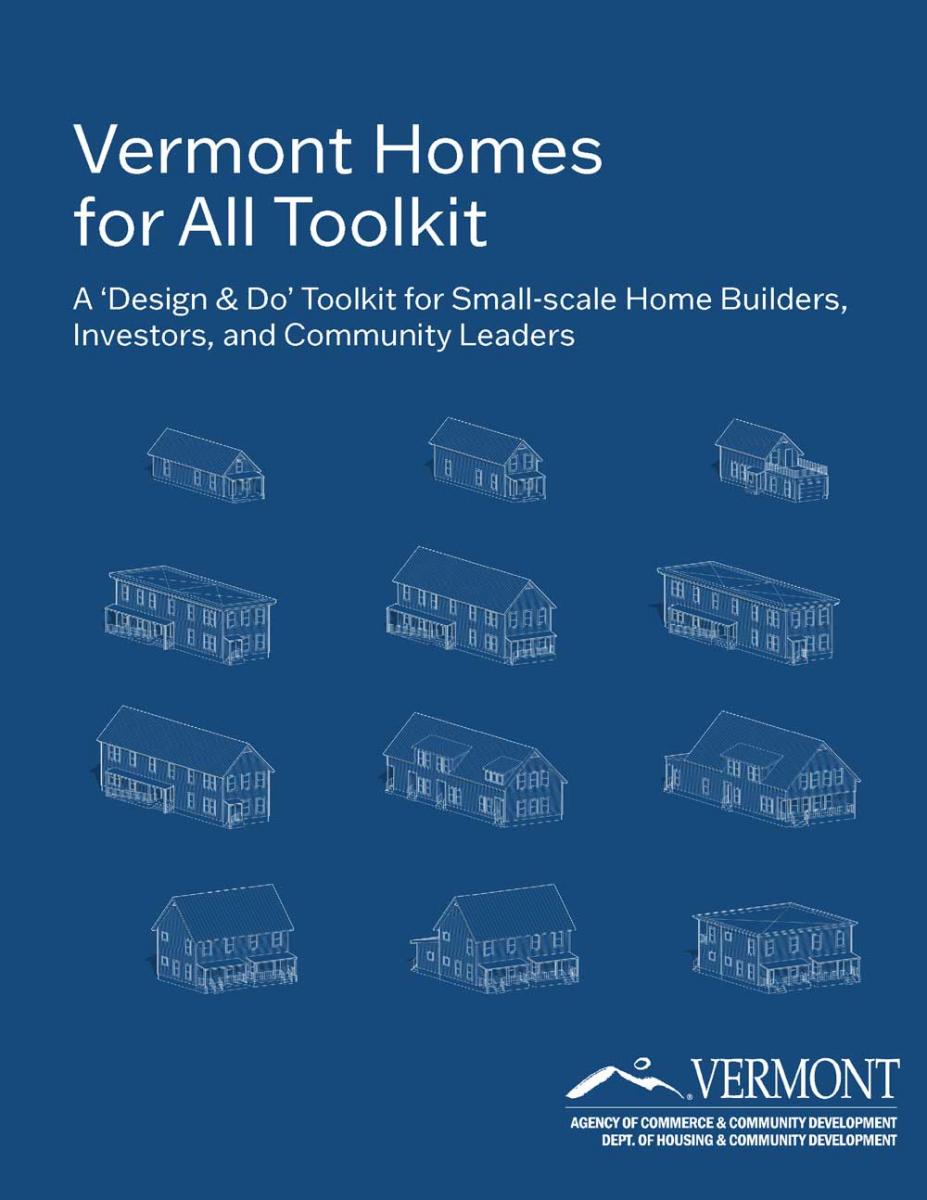
But the Toolkit is much more than its component parts. It is the start of a movement to bring missing middle housing back to Vermont communities, an opportunity to grow a new generation of developers who value “return on community” as much as return on investment. It is a statewide clarion call to support these developers and their work through common-sense regulatory and financial solutions.
This was evident on March 14, when the VT Homes for All Toolkit launched to a maximum capacity crowd at the Toolkit Trainer Summit in Barre City.
The half-day event was an energizing occasion to connect, network, and learn for novice and emerging small-scale home builders, community development professionals, and local leaders interested in innovative home-building and home-renovation solutions. The Summit included a Vermont small-scale developers’ panel featuring stories and advice from four current developers, and an interactive activity where attendees were encouraged to “think like a developer” and design a missing middle housing site plan. Using a base map, resource packet, and a kit of parts—including three of the new VT missing middle home typologies—participants worked through a set of common development constraints such as environmental, regulatory, and infrastructure. They then identified developable area and configured the site plan, being mindful of parking requirements, driveway access, outdoor gathering space, and considerations like snow melt that are familiar to Vermonters.
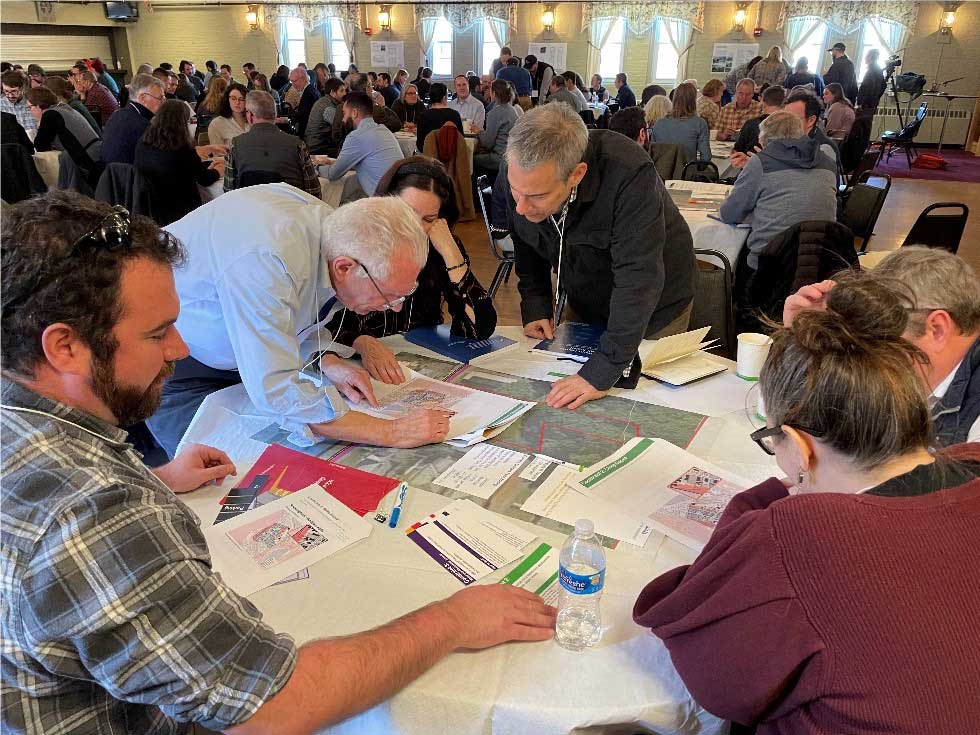
Summit attendee Ravi Venkataraman—who is a planner with the City of Burlington, lecturer at the University of Vermont, and PhD candidate in Planning at Virginia Tech—says the activity animated the Toolkit in a practical way. “The ‘think like a developer’ activity brought together the dimensional requirements concepts with the places we walk by every day,” said Venkataraman. “Having developers in the room too clarified not only the impacts of small changes to, say, setbacks and lot coverage on the built environment, but also how such small changes affects small developers, renters and homebuyers alike.”
The story of Homes for All
The Homes for All Toolkit was years in the making, and it was not born in a vacuum.
“The Vermont Department of Housing & Community Development (DHCD) strives to keep tabs on innovations around the Country,” explains Planning & Policy Manager Jacob Hemmerick—especially when it comes to untying the Gordian knot that is the housing crisis. He points to development-ready community checklists popping up in places like Maine and Michigan, pre-approved house plan sets such as “Build South Bend” in Indiana, and emerging non-profits like the Incremental Development Alliance’s small-scale developer training.
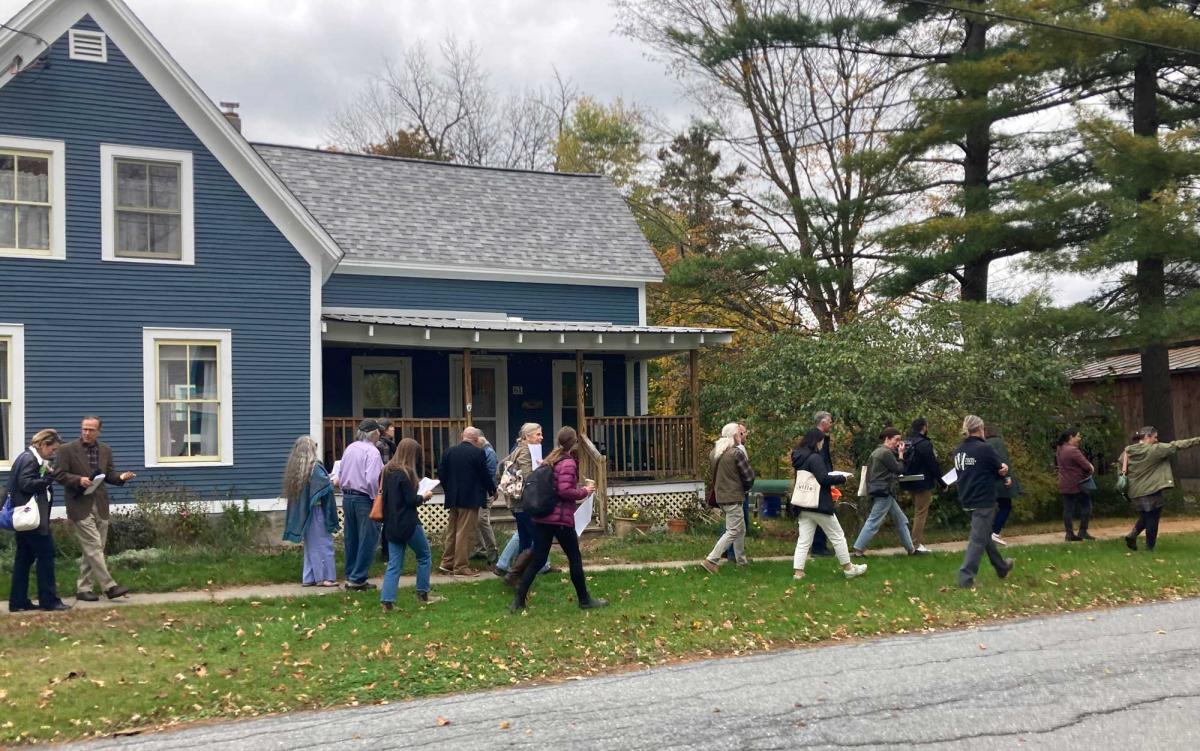
DHCD saw an opportunity to offer a step up for small-scale developers in Vermont’s unique market. It was an idea to challenge market forces suppressing missing middle homes and builders, and it spoke to the indomitable spirit of Vermonters and their passion for local solutions scaled for our rural economy. The Governor’s team and Senator Michael Sirotkin, former Chair of the Senate Committee on Economic Development, Housing and General Affairs, saw the potential and supported funding for this project in the Omnibus Housing Bill in 2022. The Department then framed up the project, attracted strong interest in the consulting contract, and hired Utile Planning & Design, a firm with extensive experience in both affordable housing and the New England context.
Over the past year, the Homes for All team engaged dozens of folks across the state, from experts across the building professions to bankers and real estate agents. The team also led neighborhood infill studies with local advocates in five communities and conducted precedent research in many more. One of those communities was Bellows Falls, which applied to participate in the project as a pilot infill site.
“This toolkit is imperative for small downtowns like Bellows Falls, where there is so much passion for the community and housing, but a gap in development skills. The toolkit helps to fill that gap by providing step by step guidance to developing new housing for new or emerging housing providers,” says Sarah Lang, Administrator of the Rockingham/Bellows Falls Incremental Development Working Group, or RIDWG. She added that the Toolkit was one step in “a long list” that RIDWG has taken to advance incremental development in the community.
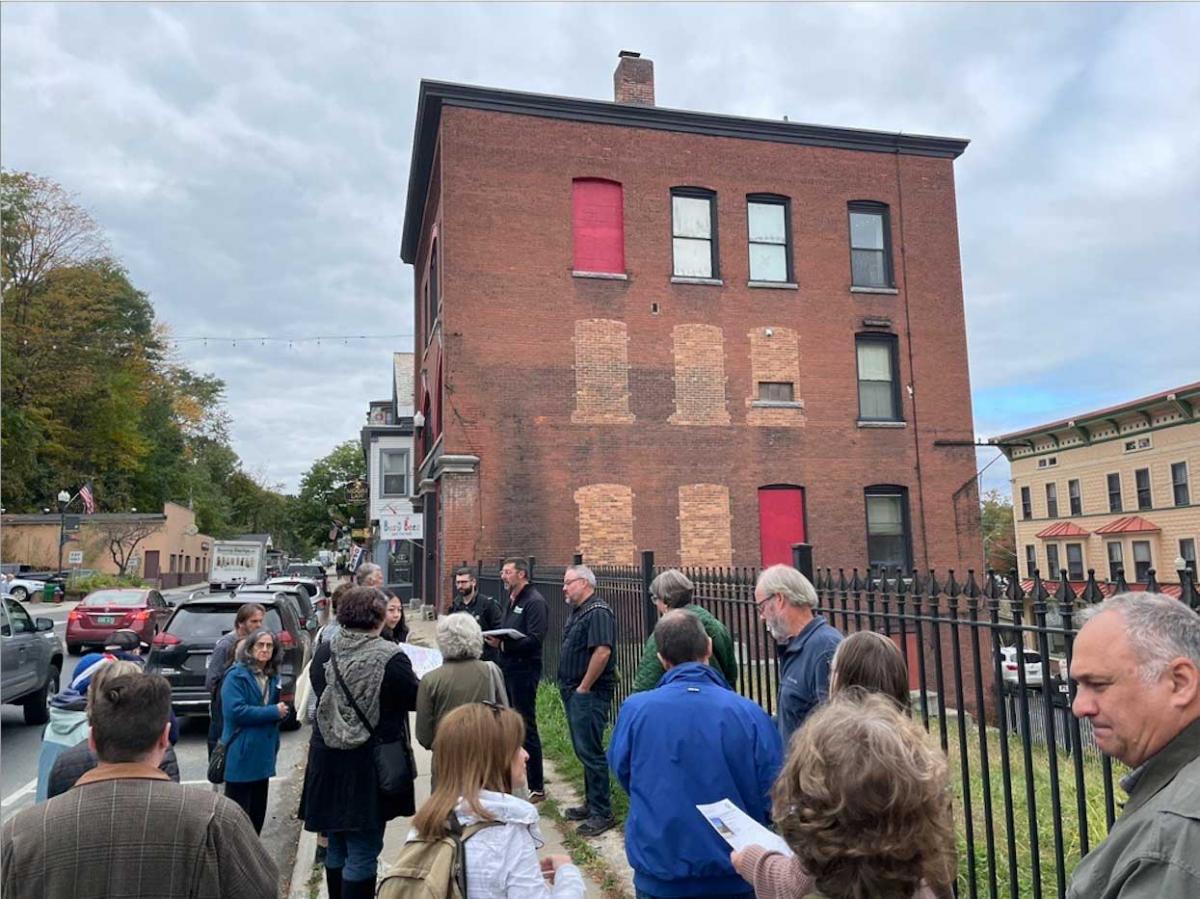
Homes for All was supported by a Steering Committee and design subgroup representing industry leaders and allied professions throughout Vermont. Lessons learned transcended the Toolkit itself, and include additional needs for hands-on training, modular construction options, and continued land development regulation reform by locals.
Importantly, infill housing is facilitated by, and reinforces, recent advances and innovations in Vermont’s regulatory landscape, including code reform, historic statewide housing legislation, incentive programs to locate housing in compact, walkable communities, and new funding streams to support Accessory Dwellings Units and middle-income housing renovation and production.
And the work continues. “We are working hard in the legislature this session to ensure that land use, permitting, and density are all addressed in ways that promote housing development, not limit it,” says Alex Farrell, Commissioner of the Department of Housing and Community Development. “Infill and missing middle housing represent practical solutions to growing our housing stock that can serve as the building blocks for vibrant, equitable, and adaptable neighborhoods.”
What’s next for Homes for All
Vermont has a plan to keep bringing missing middle housing back online and keep the momentum generated by the Toolkit’s launch going.
The Toolkit’s four missing middle housing typologies proposed in the toolkit will be starting points for a pre-approved plan set of context-sensitive designs ready for use around the state, along with regulatory efficiencies, to make housing development more predictable and affordable—as time is money in real estate. Vermont would become one of the first states to produce such a pre-approved plan set.
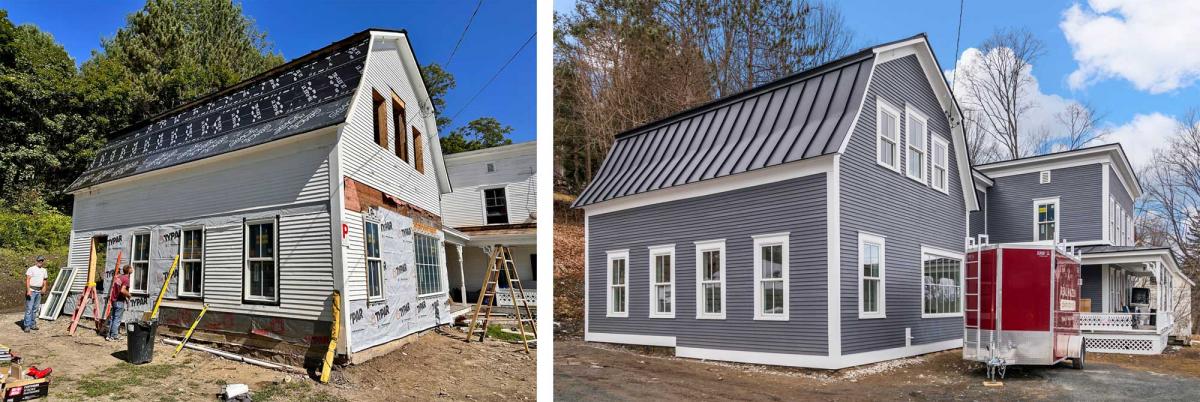
Later this year, the Department will also launch the first round of a live training cohort to coach a group of aspiring developers through the Builders’ Workbook with hands-on project support, technical assistance, and networking opportunities.
“This is representative of a sea change,” said Seth Leonard, Managing Director of Community Development at the Vermont Housing Finance Agency, at the Homes for All Summit on March 14. “Housing is the backbone of our economic vibrancy, of our diversity, of our shifting demographic realities for the future. We have to focus on who’s building and developing in Vermont in a new way.”
The Homes for All project is on track to attract and support and new generation of grassroots investors, local champions, and developers—especially first-time, women and BIPOC builders committed to their communities and ready to build walkable neighborhoods.
One such aspiring developer is Lilli West, the Bennington-based broker whose other hats include investor, renovator, and landlord. Now, West is making the transition to small-scale developer with her new company, Solutions Development. It’s an apt name because West, like many Vermonters, knows this moment of housing shortage calls for innovative solutions, and leaders to pilot them, on the path to providing homes for all Vermonters.
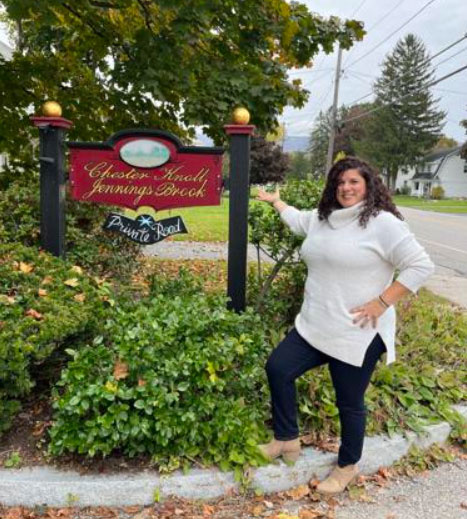
The Homes for All Toolkit and materials—including dynamic pro formas—are available to view and download for free at: https://accd.vermont.gov/homesforall.
Vermont
Vermont Green opens training ahead of USL2 campaign

BURLINGTON, Vt. (WCAX) – Following their US Open Cup run, Vermont Green FC is back at training this week, preparing for the start of the USL2 season this weekend.
The boys in green had their first full session Tuesday morning, with a number of the guys still filtering over the next couple days ahead of their season opener this coming Sunday at Boston City. It’s a mix of newbies and familiar faces: some of the returners at training today included Dani Pacella and Zach Zengue.
With less than a week turnaround between the first training session and the first game, that veteran presence will be key, but the guys say they’re spending a ton of time together and already bulding chemistry with their new teammates.
“There’s a lot of old faces, a lot of new faces,” Pacella said. “So just getting familiar with each other and building relationships on the pitch and off the pitch is super important, especially in such a short season. It’s a sprint marathon, so getting to know each other and building relationships is key. So especially this first few days, just getting our legs under us, building some fitness and getting ready for this first game on Sunday.”
“Off the field is really where that connection builds and how we get to know each other,” Zengue added. “But also on the field as well. I mean, it’s a first day of training and I feel like I know these guys already and I’m getting to know everybody. We’re together all day, because we we’re at the hotel and then we go to training together, We go out to eat together. So I think that really helps the team stay close together and, you know, really get to know each other in a short amount of time.
Copyright 2024 WCAX. All rights reserved.
Vermont
Grilling the Chef: Robert Smith III Leads a Fresh Chapter at Ferrisburgh's Starry Night Café

Chef Robert Smith III
- Position: Executive chef
- Age: 31
- Cuisine type: Italian-inflected California cuisine with fresh, seasonal ingredients
- Experience: On-the-job training in Vermont, from dishwashing at Kitchen Table Bistro to holding all stations at Texas Roadhouse to three years cooking at Guild Tavern. Moved to Los Angeles at 22 and spent four years at chef Michael Cimarusti’s two-Michelin-starred Providence — including off-site events in Mexico and cooking onstage for Bob Weir of the Grateful Dead. Other California career highlights include San Francisco’s Flour + Water and Michelin-starred AL’s Place, as well as Sightglass Coffee’s 14,000-square-foot Hollywood expansion.
- What’s on the menu: Coal-roasted oysters; crispy root vegetables with Cabot clothbound cheddar espuma; an epic deconstructed steak tartare; housemade pasta; and wood-grilled entrées, including black bass and picanha steak with loaded polenta, black garlic steak sauce, grilled lemon and sauce Bordelaise
The first Friday in May was a busy one at Ferrisburgh’s Starry Night Café. The sun was shining, and the team was snipping tulip stems and cleaning off outdoor tables to open the restaurant’s patio for the first time this year. Baby greens and herbs were peeking through the soil in the fine-dining restaurant’s new raised-bed vegetable garden. And as this reporter from Seven Days walked into the kitchen, a health inspector was wrapping up his surprise visit.
“I thought this interview would be the most nerve-racking thing today,” executive chef Robert Smith III joked, settling into a comfy new leather chair in the restaurant’s window-filled sunroom.
That room, formerly a screened-in porch warmed by space heaters, is just one of the updates recently undertaken at the destination restaurant on Route 7. Since Smith began leading Starry Night’s kitchen in late 2021, there have been three separate renovations. Most of the multiroom restaurant has been refreshed, including a hood expansion to accommodate a wood-fired grill in the kitchen, updates to the octagonal dining room and the porch winterization. The most recent project — a complete revamp of the front barroom, for which Starry was closed for five weeks this spring — has created a modern, downright swanky space.
A Jericho native, Smith already thought the restaurant was one of the most beautiful in Vermont when he arrived for his interview in November 2021, two days after moving back to Vermont from a seven-year stint at top restaurants in California. Now, thanks to all the investment from owners Mark and Molly Valade, the setting has a big-city feel befitting his big, bold menu.
Starry Night regular Bobby Berg, owner of Haute & Heady Cannabis Cuisine, told Seven Days the renovated restaurant “matches California’s wine country refinement with Vermont’s rustic, earthy palates.” Smith, recalling Berg’s feedback on a recent meal, summarized a more visceral take: “He said he wants to take a bath in the black garlic steak sauce.”
The new marble-topped bar is far from a bathtub, but it’s the perfect place to soak up the delights of a cut-to-order, deconstructed steak tartare ($23) or luxuriate over a bowl of ribbony mafaldine pasta with wild morel ragù ($36) alongside a cocktail from bar pro Nick Roy.
Smith took a break from his busy day to chat about the renovations, forgotten rooms and what’s growing in the garden.
How’d the health inspection go?
I saw [the inspector], and I was like, [big sigh] ‘Hi!’ But it went well. I didn’t get the score yet, but I saw what he wrote down and have a good idea.
I’m sure he was just here to check out this incredible new bar.
[Laughing] This used to be the forgotten room. You’d walk through the door right into the bar, and it was awkward.
A lot of guests would leave notes in their reservations saying they didn’t want to sit in the front room. The first week we were back, we had guests say, “Actually, I do want to sit in there.”
Beyond the physical changes, how has your menu evolved since you started here?
I look back in my pictures at early menu stuff, and I think I was really, really focused on “fine dining” and plating things that way. I’m getting more comfortable with my skill set and what I like.
We’ve gotten a lot more pasta-forward, too. I love northern Italian braises of pork and beef that take several days. We make ricotta and marinate the meat in the whey from that to tenderize it. We’ve even got a pasta extruder in the back, so we can make semolina dried noodles in-house — all kinds of shapes.
You posted a video of beet radiatori recently that looked pretty incredible.
Several people thought that was hamburger — my parents and a delivery driver. He said, “Making hamburg?” I was like, What is hamburg? This is great.
If you were to pair a dish with each of the restaurant’s dining rooms, what would they be?
For the bar, grilled oysters, roasted veg and fun specials that we run. You can see the kitchen, so that makes sense to me there. This room [the former porch], I don’t know what it is, but it attracts the most pasta lovers. We’ll get tables of all pasta. The larger dining room, it’s the big showstopper plates.
You’re adding Saturday lunch in June. What will be on the menu?
We’re gonna do some pastas — carbonara, vongole, a spring zucchini pasta with mafaldine — Korean spareribs, and some sandwiches on housemade buns. We’re working on some type of crispy fry thing. We don’t have a fryer in the kitchen, so that’s the dilemma.
Speaking of fryers, what was it like going from a chain restaurant to fine dining early in your career?
I was hired [at Texas Roadhouse] as a dishwasher and worked cold prep, hot prep, the line, grill. When the Guild was opening up, I was like, “This is sick — a new wood-grilled steakhouse.” I felt confident cooking steak. It’s different quality and seasonings, but you’re cooking a lot of steak at Texas Roadhouse. You get temperature and volume. Still, the Guild was an eye-opening experience. Chef Phillip Clayton was a really great mentor for me. When I left, he gave me a chef coat and a really nice good-grace note to anywhere.
How do you foster that sort of growth now that you’re the mentor?
It’s incredible to see people put more on their plate and just crush it. My sous chef, Eli Eppolito, is really tremendous. He keeps the kitchen afloat — and he’s six foot five and can dunk. He started as a cook; he graduated from UVM and didn’t want to be a sociologist.
I definitely like to promote from within. There’s no reason not to pursue what we have and invest more with them. We’ve got two guys who started in the dish pit, and now they’re on the pasta station and the grill. A chef friend of mine, Austin [Poulin of southern Vermont’s Restaurant at Hill Farm], dined here last week, and he said, “How old are these kids?” I was like, “Combined age of 39. And they’re doing great.” I don’t think they had encouragement like that before.
How do you find people to work here, being a destination spot?
We do a lot of carpooling. Most of us are commuting from Middlebury or Burlington. Staffing is the hardest. That’s why maintaining this team is so important — this is the best staff we’ve ever had. We have under 20 employees, and not all of them are full time. But this restaurant’s only open 15 hours a week.
Even for diners, you’ve got to plan. You’re not often driving by here at 5:30 p.m. like, “Oh, I’m gonna swing in for dinner.”
As things start popping out of the ground, what are the next local ingredients you’re excited to put on the menu?
Asparagus, better peas — they’re starting, but they need to be a little sweeter — ramps and morels. Our six new garden beds were planted this week; Horsford [Gardens & Nursery] built them, and Farmer Hil is maintaining them for us. As cooks, we’ll go out daily to pick herbs and stuff for a garden salad. I just had some lettuce, which I shouldn’t really be eating because it should grow. But it tastes so fresh.
What’s planted in there? It’s cool to see the beds from Route 7.
Let’s walk out there. We’ve got radishes, beets, speckled lettuce, red Russian kale, red-veined sorrel, parsley chives, purple shiso. We got that from Farmer Hil last year for the tartare, and now it will be from here.
[Pointing to plants] Cilantro, curly parsley, chives, onions, sage, oregano, thyme, rosemary. It’s like the French Laundry.
Want to go in and light the grill? I have it all set up, because I figured this is a “grilling” thing. I’ll give you the blowtorch.
This interview was edited and condensed for clarity and length.
-

 Politics1 week ago
Politics1 week agoHouse Dems seeking re-election seemingly reverse course, call on Biden to 'bring order to the southern border'
-

 World1 week ago
World1 week agoStand-in Jose Raul Mulino wins Panama presidential race
-

 News1 week ago
News1 week agoCompass Direct LLC’s 2024 Registration in North Carolina
-

 World1 week ago
World1 week agoTech compliance reports, Newsletter
-

 News1 week ago
News1 week agoColumbia University cancels its main commencement ceremony after weeks of turmoil
-

 News1 week ago
News1 week agoMan, 75, confesses to killing wife in hospital because he couldn’t afford her care, court documents say
-
News1 week ago
UCLA to resume in-person classes after Gaza protest crackdown
-

 World1 week ago
World1 week agoPentagon chief confirms US pause on weapons shipment to Israel







